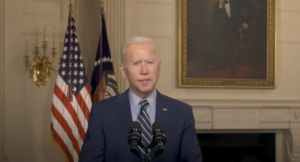The guidance is to help agencies plan budgets and strategies while the administration continues to work on a more detailed National Security Strategy. One of the key themes is that the United States has to engage with the world. “Diplomacy is back. Alliances are back,” Biden says in the document.
The United States has to take a leadership role “in promoting shared norms and forge new agreements on emerging technologies, space, cyberspace, health and biological threats, climate and the environment, and human rights,” says the guidance.
The Defense Department will have to set “clear priorities” in its budget, Biden says. DoD will need to realign resources in order to deal with an “increasingly assertive China and destabilizing Russia.”
The administration will work with Congress to shift spending “from unneeded legacy platforms and weapons systems” to cutting-edge technologies and capabilities, says the document.
Biden also calls on DoD to “streamline the processes for developing, testing, acquiring, deploying and securing these technologies.”
Other highlights from the document:
- China has rapidly become more assertive. It is the only competitor potentially capable of combining its economic, diplomatic, military and technological power to challenge the international system.
- Russia remains determined to enhance its global influence and play a disruptive role on the world stage.
- Regional actors like Iran and North Korea continue to pursue capabilities and technologies,
- Terrorism and violent extremism, both domestic and international, remain significant threats.



